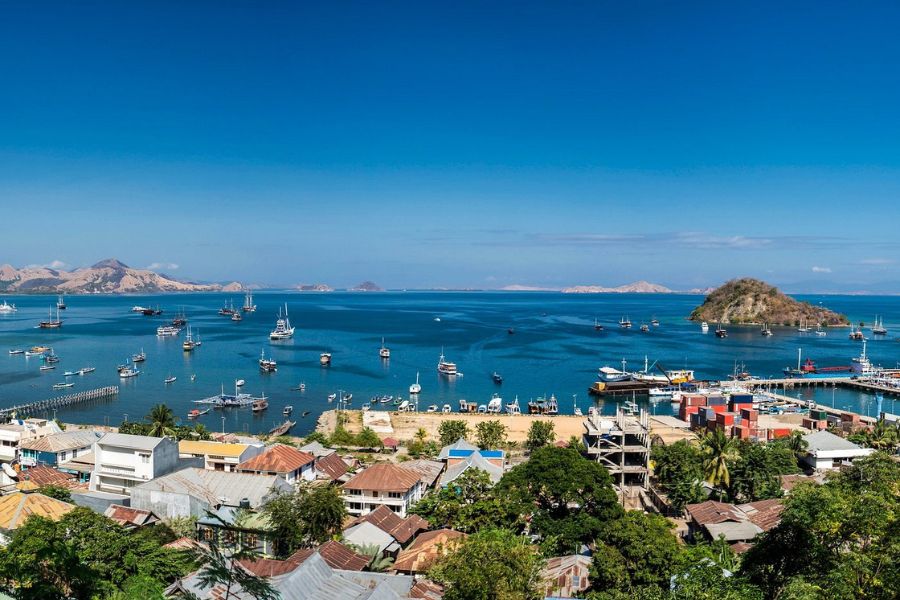Labuan

Labuan, an island located off the shore of Borneo in Malaysia, has its own charm. This tourist destination enjoys a duty-free status, along with historical and natural beauty, due to which travel has become a specialty here. In this article, we will reveal the richness of history in this island, discuss the best time to visit, and guide you on how to get there.

Beautiful view of Labuan (Source: Tripadvisor)
The land of Labuan is as varied in its history as it is in the landscape. For several centuries, the island has figured prominently in most of the political and economic events of the region. In fact, the name "Labuan" itself was from the Malay word "Labuhan," meaning anchorage, with regard to its strategic place as a maritime hub.
Up till the early part of the 19th century, this place was virtually a territory belonging to the Brunei Malays. The island was ceded to the British in 1846 as part of a treaty. The British made here a naval base, and the island was an important outpost for trade and defense.
.jpg)
Skyscraper in Labuan (Source: Wikipedia)
During the Second World War, this place fell into Japanese hands, and the island became one of the theaters of a relentless battle by both the Allies and Japanese. These can still be traced in war memorials and museums to this day, reminding visitors of the important role played by Labuan during the war.
.jpg)
Beautiful blue sea at Labuan (Source: Sandee)
The Labuan War Cemetery is the largest war cemetery in Malaysia, it is the resting site for over 3,900 Allied soldiers who died during World War II. Serene and beautifully kept, this is the most poignant reminder of the Second World War.
.jpg)
Feel the historical element at the war cemetery (Source: WikimediaCommons)
Centrally located in Labuan Town, Labuan Museum is a reflection of its rich history and culture. Early history artifacts, the colonial era, and World War II are displayed in this museum. This place serves as an excellent orientation point for visitors who are interested in learning how this place was transformed from a British naval base into what it is today: a modern financial center.
.jpg)
Outside the museum in Labuan (Source: RiderChris)
Pulau Papan, for the tropical getaway, is a couple of minutes by boat from the island and offers a beach that is pristine in nature. This little island offers ideal conditions for picnics, swimming, and snorkeling.
Turquoise waters and soft sandy beaches are just perfect for a day trip for those seeking to relax and have some fun under the sun. Visitors are also allowed to go in and take a peep at the island's lighthouse, where one can find stunning panoramic views of the South China Sea.
.jpg)
Beautiful Pulau Papan beach (Source: Tripadvisor)
This Marine Park is one such haven for any sea enthusiast. Crystal-clear turquoise water, coral reefs teeming with life, and varieties of marine life mark this marine park that consists of three smaller islands: Pulau Kuraman, Pulau Rusukan Besar, and Pulau Rusukan Kecil.
Diving is hot here in the park, for the wrecks of ships during World War II show a different dimension here underwater. It is an excellent spot to go snorkeling and kayaking amidst its serene atmosphere, hence, it's an environmentally touristy area.
.jpg)
Marine park for island hopping in Labuan (Source: marinpark)
The most iconic landmark, one can say, is the Chimney Museum, which reflects the coal mining history of Labuan. This 106-foot red brick tower, known as the Chimney, is believed to have been part of a coal-mining operation during the British colonial era, although the function it served is not very clear. The museum also houses exhibits about the industrial history of this island and reveals a lesser-known side of this island.
.jpg)
Chimney Museum (Source: Wikipedia)
Read more: Tour 6 days in Malaysia: Manukan Island
This island has a tropical climate that generally has hot temperatures throughout the year. The dry season is, however, the best time to visit and runs from March through October of the year. In this period, the weather is sunny, and sea conditions are appropriate for all water activities such as diving, snorkeling, and island hopping.
It is the wet season, which comes with much rain and monsoon winds between November and February. The island is beautiful, but at this time, there will be limited outdoor activities. The trip to this island must be planned such that it falls within the dry season to maximize its nature and outdoors.
.jpg)
Best time to visit Labuan for the best experience (Source: WonderfulMalaysia)
By Air: The Airport is the chief entry point for the island and is located approximately 2 kilometers away from the town. It is served by regular flights to and from this island, with connections in Kuala Lumpur, Kota Kinabalu, and Miri by Malaysia Airlines and AirAsia.
By Sea: For those in this island for some taste of the sea, a ferry at the port operates daily services to and from Kota Kinabalu and Brunei.
.jpg)
Travel to Labuan by ferry (Source: vloglabuan)
This island is one of the Treasure Islands of Southeast Asia, with a mix of history, nature, and relaxation. From the serious yet captivating War Cemetery, plunging into the vibrant waters at Marine Park, to simply catching the sun on Pulau Papan, this place is ready to offer something for everyone. So don't hesitate and schedule with Asia King Travel to have the best experiences in this village.
Read more: Malaysia Beach Holiday